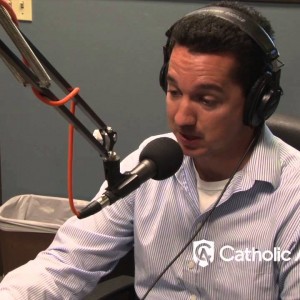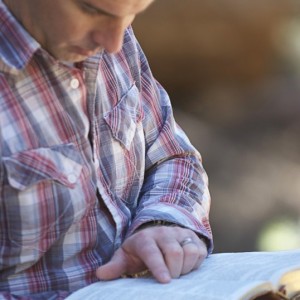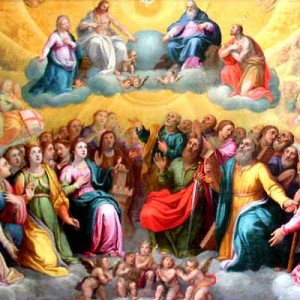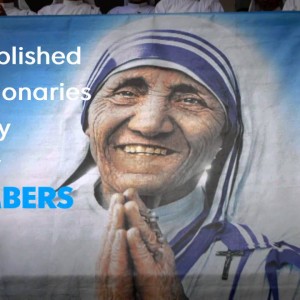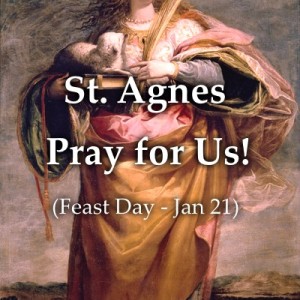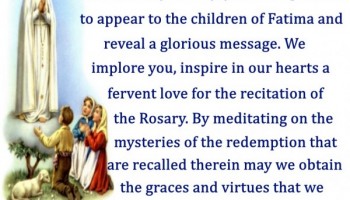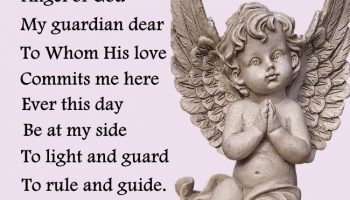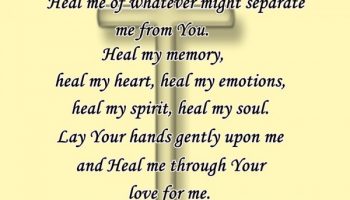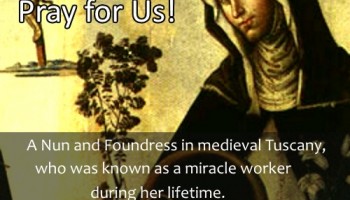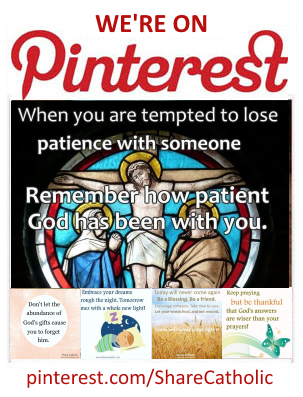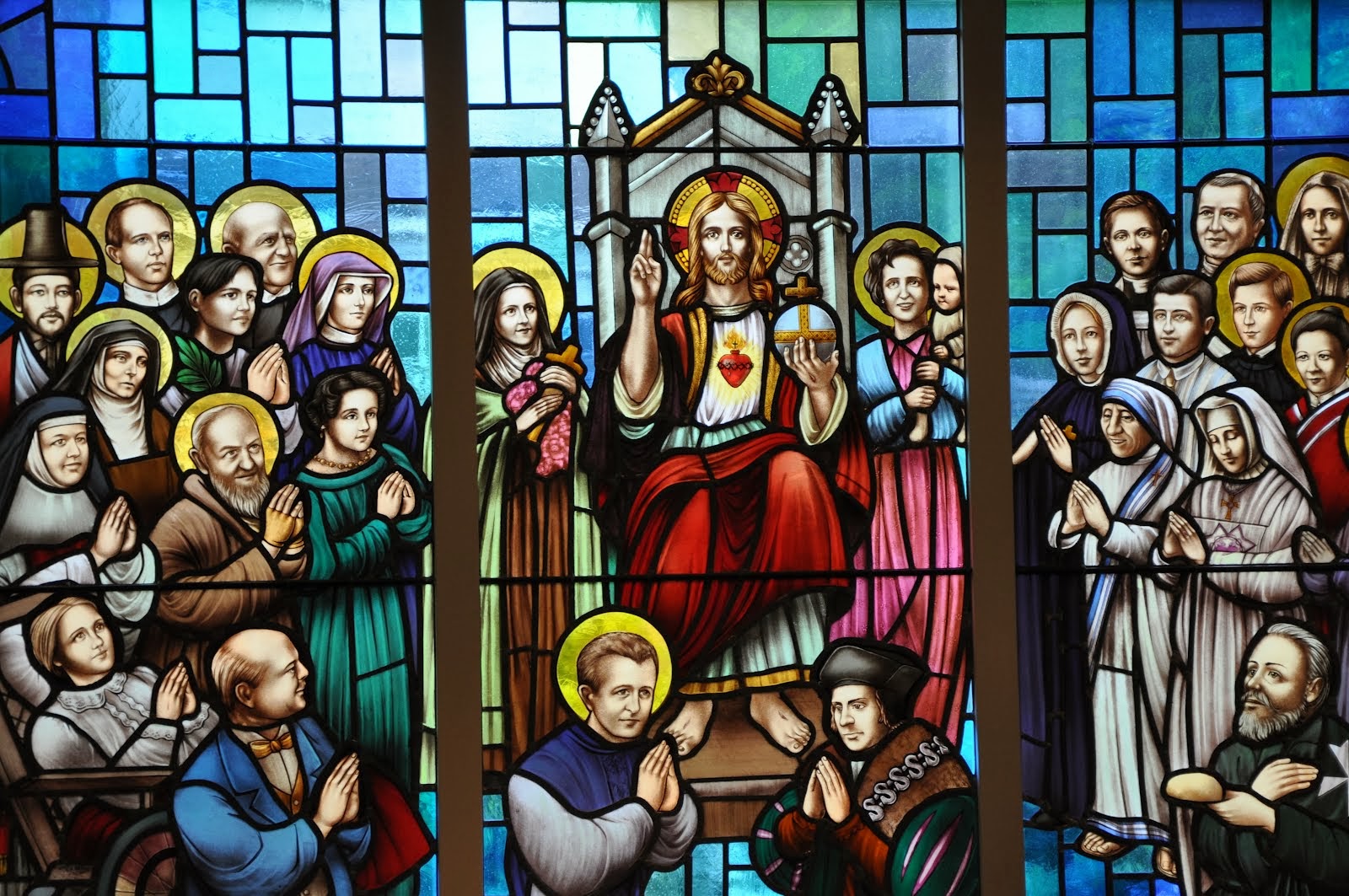
As a Catholic, have you ever been accused of worshiping the saints and their statues and images? The Communion of Saints is one of the most commonly misunderstood Catholic teaching by other Christian denominations. Many Protestants might ask, “Why do you pray to saints? Why not pray directly to God?” They say that we should pray to Jesus as He is the only mediator between man and God as said in 1 Timothy 2:5,
“For there is one God, and there is one mediator between God and men, the man Christ Jesus.”
For us to understand fully what the God meant in that passage (or any passage), we must read it in context. We don’t want to go read certain verses then conclude immediately. So what’s the context? In the previous verses, we read,
“First of all, then, I urge that supplications, prayers, intercessions, and thanksgivings be made for all men, for kings and all who are in high positions, that we may lead a quiet and peaceable life, godly and respectful in every way. This is good, and it is acceptable in the sight of God our Savior, who desires all men to be saved and to come to the knowledge of the truth.”
Here, we see that St. Paul asked the Christians to pray and intercede for all men. He also notes that God is pleased when we intercede and pray for others. What does it mean to be an intercessor? It is to be a mediator between a person and God right? When you intercede for a person, you pray for his or her intentions and needs to God. An example would be a person who asked the pastor to pray for his family. That pastor is being a mediator. Does being an intercessor or a mediator negate and deny the mediatorship of Christ? No. As we read, St. Paul is not talking about Christ as the only mediator. If we read the passage in context, St. Paul is telling us that Christ is the supreme mediator between God and man, and we and the saints are the subordinate mediators and intercessors, hence under the supreme mediatorship of Jesus Christ. The Catechism of the Catholic Church (CCC) says in paragraph 946 that the Church is the assembly of the communion of saints, the Body of Christ, which is composed of the living and the dead. As the Body of Christ, we are part of Him thus we share His mediatorship.
We find in the Old Testament, Abraham bargaining with God and interceding for Sodom and Gomorrah (Genesis 18:16-33). In the New Testament, St. James said in James 5:16,
“Therefore confess your sins to one another, and pray for one another, that you may be healed. The prayer of a righteous man has great power in its effects.”
St. James also urges us to pray for one another. He also said that the prayer of a righteous man is effective. As said in Proverbs 15:29,
“The Lord is far from the wicked, but he hears the prayer of the righteous.”
Who are these righteous men? It is the leaders of the Church, her servants, and her saints. This is the Church, which build up the Body of Christ as said in Ephesians 4:11-12,
“And his gifts were that some should be apostles, some prophets, some evangelists, some pastors and teachers, to equip the saints for the work of ministry, for building up the body of Christ.”
In the same way, the supreme mediatorship of Jesus Christ is like His priesthood. He is the high priest as said in Hebrews 3:1,
“Therefore, holy brethren, who share in a heavenly call, consider Jesus, the apostle and high priest of our confession.”
As Jesus Christ is our high priest, just like our subordinate mediatorship, we are called to be priests under the royal priesthood of Christ. St. Peter said in 1 Peter 2:4-5,
“Come to him, to that living stone, rejected by men but in God’s sight chosen and precious; and like living stones be yourselves built into a spiritual house, to be a holy priesthood, to offer spiritual sacrifices acceptable to God through Jesus Christ.”
One thing happens to us when we are baptized as Christians is we become priests by baptism as ordination is different. But what does a priest do? A priest offers sacrifice to God. St. Peter invites us to be like priests and to offer spiritual sacrifices. What will be our sacrifices as priests? St. Paul encourages us in Romans 12:1 to offer ourselves as living sacrifices,
“I appeal to you therefore, brethren, by the mercies of God, to present your bodies as a living sacrifice, holy and acceptable to God, which is your spiritual worship.”
In the same way, does our priesthood negate or deny the priesthood of Christ? No.
But Protestants might ask, “Ok, but why intercede for the dead? They can’t hear us anymore.”
In Revelation 6:9-11 we read,
“When he opened the fifth seal, I saw under the altar the souls of those who had been slain for the word of God and for the witness they had borne; they cried out with a loud voice, “O Sovereign Lord, holy and true, how long before thou wilt judge and avenge our blood on those who dwell upon the earth?” Then they were each given a white robe and told to rest a little longer, until the number of their fellow servants and their brethren should be complete, who were to be killed as they themselves had been.”
We read that the souls of the martyrs in heaven cried out, indicating that they are alive. Also they are aware of the events on earth as they are waiting for God to avenge them. Couple of verses after, we read in Revelation 5:7-8 angels offer the prayer of the saints as incense,
“and he went and took the scroll from the right hand of him who was seated on the throne. And when he had taken the scroll, the four living creatures and the twenty-four elders fell down before the Lamb, each holding a harp, and with golden bowls full of incense, which are the prayers of the saints”
In the Old Testament, David offers his prayer as incense to God in Psalm 141:2, like the angel did,
“Let my prayer be counted as incense before thee, and the lifting up of my hands as an evening sacrifice!”
Going further to Revelation 8:3-4, we read another angel offering prayers to God joining them to the prayers of the saints,
“And another angel came and stood at the altar with a golden censer; and he was given much incense to mingle with the prayers of all the saints upon the golden altar before the throne; and the smoke of the incense rose with the prayers of the saints from the hand of the angel before God.”
This shows that in heaven, the saints and angels intercede and offer our prayers to God. Another important thing to point is that the dead saints, the saints in heaven, are still part of the Church. In Colossians 1:18, St. Paul proclaims Jesus is the head of the Church,
“He is the head of the body, the church; he is the beginning, the first-born from the dead, that in everything he might be pre-eminent.”
He also said that Christ body is one though composed of many in 1 Corinthians 12:12-14,
“For just as the body is one and has many members, and all the members of the body, though many, are one body, so it is with Christ. For by one Spirit we were all baptized into one body—Jews or Greeks, slaves or free—and all were made to drink of one Spirit. For the body does not consist of one member but of many.”
A good question to ask is, “Do the people who died for Christ, no longer part of the body of Christ?” Of course not because being dead does not mean being separated from the body of Christ as said in Romans 8:35, 37-39,
“Who shall separate us from the love of Christ? Shall tribulation, or distress, or persecution, or famine, or nakedness, or peril, or sword? …No, in all these things we are more than conquerors through him who loved us. For I am sure that neither death, nor life, nor angels, nor principalities, nor things present, nor things to come, nor powers, nor height, nor depth, nor anything else in all creation, will be able to separate us from the love of God in Christ Jesus our Lord.”
That is the mystical union between Christ and all believers so that we can continue to offer prayers for one another, dead or alive. Jesus Himself said that God is the God of living and not of the dead,
“‘I am the God of Abraham, and the God of Isaac, and the God of Jacob’? He is not God of the dead, but of the living.”
The saints are very much alive, in fact, more alive than we are here on earth as they are now seeing God face to face. Another proof that the saints are alive is the Transfiguration account in Matthew 17:1-5,
“And after six days Jesus took with him Peter and James and John his brother, and led them up a high mountain apart. And he was transfigured before them, and his face shone like the sun, and his garments became white as light. And behold, there appeared to them Moses and Eli′jah, talking with him. And Peter said to Jesus, “Lord, it is well that we are here; if you wish, I will make three booths here, one for you and one for Moses and one for Eli′jah.” He was still speaking, when lo, a bright cloud overshadowed them, and a voice from the cloud said, “This is my beloved Son,[a] with whom I am well pleased; listen to him.”
Here, we read that Moses and Elijah, having been long dead, is talking with Jesus showing that the saints are alive. In Hebrews 12:1-2, we see a cloud of witnesses cheering us on running the race of holiness and to look to Jesus,
“Therefore, since we are surrounded by so great a cloud of witnesses, let us also lay aside every weight, and sin which clings so closely, and let us run with perseverance the race that is set before us, looking to Jesus the pioneer and perfecter of our faith, who for the joy that was set before him endured the cross, despising the shame, and is seated at the right hand of the throne of God.”
The saints, these cloud of witnesses who had gone before us are aware of the events taken place on our lives. In Luke 15:7 we read that the saints and angels celebrates when a sinner repents,
“Just so, I tell you, there will be more joy in heaven over one sinner who repents than over ninety-nine righteous persons who need no repentance.”
St. Paul recognizes the elders, the saints, who had gone before us, worthy of double honor as he said in 1 Timothy 5:17,
“Let the elders who rule well be considered worthy of double honor, especially those who labor in preaching and teaching.”
As the saints in heaven are not separated in the Church, we must give them honor for exemplifying their faith in Christ.
Others might ask, “Why Catholics worship Mary?”
The first answer is no, the Catholic Church do not worship Mary and will never be. The Church gives high honor to Mary because she is the Mother of God. (Jesus is God. Mary is the mother of Jesus. Therefore Mary is the mother of God.) There are three levels of giving honor in the Church. Namely, “Dulia” is giving honor and reverence as given to the saints, “Hyperdulia” is giving higher honor and reverence as given to Mary because of her role in salvation, and lastly, “Latria” is adoration and worship due to God alone. That’s why, the word idolatry or “idolatria” is giving worship to things or person that is due to God alone. It is important to note that the honor Catholics give to Mary is “hyperdulia” and not “latria”. Thus, Catholics do not commit idolatry.
But Protestants do see that Catholics kneel, bow down and pray before images of the saints. The Bible does not prohibit kneeling, bowing and praying to statues. Images were created as aids of prayer and agents to bring a believer towards God. Protestants often point out that God prohibited making of graven images in Exodus 20:4-5,
“You shall not make for yourself a graven image, or any likeness of anything that is in heaven above, or that is in the earth beneath, or that is in the water under the earth. you shall not bow down to them or serve them; for I the Lord your God am a jealous God, visiting the iniquity of the fathers upon the children to the third and the fourth generation of those who hate me, 6 but showing steadfast love to thousands of those who love me and keep my commandments.”
First of all, we must recognize that it is the worship of the graven images that God forbids and not the creation of it. It is in the intention of bowing that matters. As stated earlier, it is important that we read the passages in context so that we can understand what God really meant. Five chapters later, we read in Exodus 25:18-22 that God commanded Moses to build the Ark of the Covenant with two cherubim on its sides,
“And you shall make two cherubim of gold; of hammered work shall you make them, on the two ends of the mercy seat. Make one cherub on the one end, and one cherub on the other end; of one piece with the mercy seat shall you make the cherubim on its two ends. The cherubim shall spread out their wings above, overshadowing the mercy seat with their wings, their faces one to another; toward the mercy seat shall the faces of the cherubim be. And you shall put the mercy seat on the top of the ark; and in the ark you shall put the testimony that I shall give you. There I will meet with you, and from above the mercy seat, from between the two cherubim that are upon the ark of the testimony, I will speak with you of all that I will give you in commandment for the people of Israel.”
We now have this dilemma because Exodus 20:4-5, God forbid making of graven images with likeness of anything in heaven, earth and sea but yet, He ordered Moses to make images of cherubim which are heavenly creatures. God goes on commanding Moses in Numbers 21:4-9 to make a bronze serpent,
“From Mount Hor they set out by the way to the Red Sea, to go around the land of Edom; and the people became impatient on the way. And the people spoke against God and against Moses, “Why have you brought us up out of Egypt to die in the wilderness? For there is no food and no water, and we loathe this worthless food.” Then the Lord sent fiery serpents among the people, and they bit the people, so that many people of Israel died. And the people came to Moses, and said, “We have sinned, for we have spoken against the Lord and against you; pray to the Lord, that he take away the serpents from us.” So Moses prayed for the people. And the Lord said to Moses, “Make a fiery serpent, and set it on a pole; and every one who is bitten, when he sees it, shall live.” So Moses made a bronze serpent, and set it on a pole; and if a serpent bit any man, he would look at the bronze serpent and live.”
God also ordered King Solomon in 1 Kings 7:27-29 to make graven images,
“He also made the ten stands of bronze; each stand was four cubits long, four cubits wide, and three cubits high. This was the construction of the stands: they had panels, and the panels were set in the frames and on the panels that were set in the frames were lions, oxen, and cherubim. Upon the frames, both above and below the lions and oxen, there were wreaths of beveled work.”
We read that God Himself commanded Moses and King Solomon to make graven images. Is God really forbid making graven images? It would be impossible for God to contradict Himself. God does not prohibit making of statues and images of saints as long as these are not being worshiped. The Catholic Church teaches that idolatry in the CCC paragraph 2112,
“The first commandment condemns polytheism. It requires man neither to believe in, nor to venerate, other divinities than the one true God. Scripture constantly recalls this rejection of “idols, [of] silver and gold, the work of men’s hands. They have mouths, but do not speak; eyes, but do not see.” These empty idols make their worshippers empty: “Those who make them are like them; so are all who trust in them.” God, however, is the “living God” who gives life and intervenes in history.”
And in CCC 2113,
“Idolatry not only refers to false pagan worship. It remains a constant temptation to faith. Idolatry consists in divinizing what is not God. Man commits idolatry whenever he honors and reveres a creature in place of God, whether this be gods or demons (for example, satanism), power, pleasure, race, ancestors, the state, money, etc. Jesus says, “You cannot serve God and mammon.” Many martyrs died for not adoring “the Beast” refusing even to simulate such worship. Idolatry rejects the unique Lordship of God; it is therefore incompatible with communion with God.”
God is pleased when His children are united in one faith in Christ. All believers are part of the one body of Christ, whether living or dead. We are called to pray for one another through Christ our mediator. God does not prohibit making of images that will be used as aids to bring the believers closer to Him. We are all part of His body. If we persecute the Church and her saints, we are persecuting Christ Himself as He said to Saul whom persecuted Christians in Acts 9:4-5,
“And he fell to the ground and heard a voice saying to him, “Saul, Saul, why do you persecute me?” And he said, “Who are you, Lord?” And he said, “I am Jesus, whom you are persecuting.”

